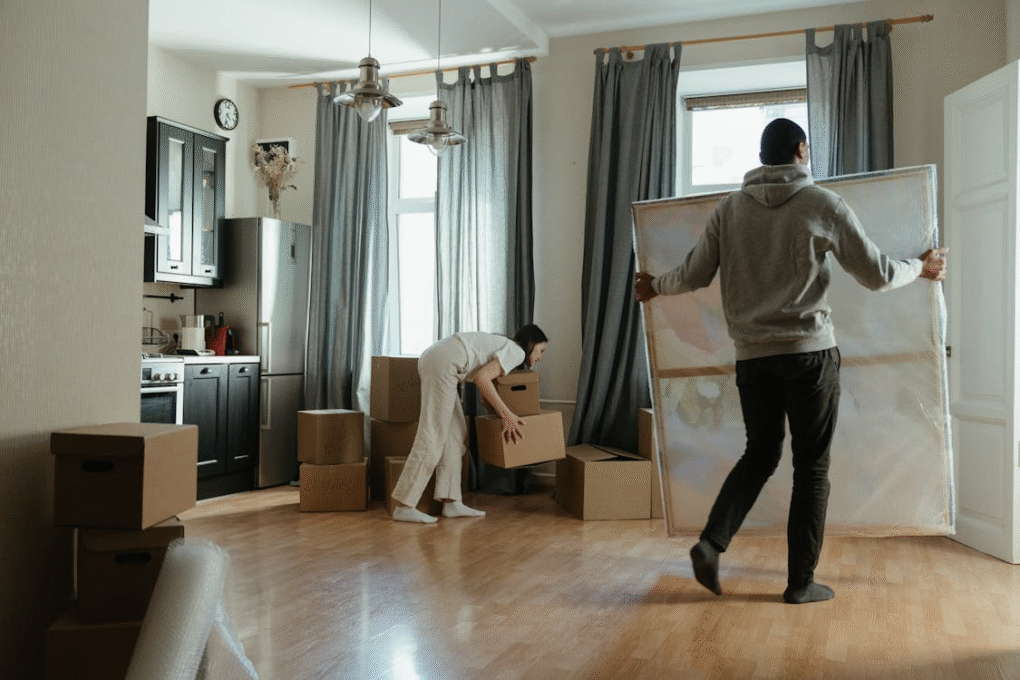
Decorating a new home is one of those exciting steps that feels full of promise. It is your chance to shape the space around how you live and what you love. There is nothing quite like watching an empty room become something personal and meaningful.
However, many people rush into decorating without pausing to think through the basics. While choosing paint colours and shopping for furniture can be enjoyable, these activities often distract from important preparation steps. Skipping a few small but crucial tasks early on can lead to costly mistakes later.
It is worth slowing down before you dive in. A little planning makes the entire process smoother and less stressful.
Plan Where to Store and Move Items
Before unpacking or arranging furniture, take stock of what you are actually using right now. Not everything needs to be in the house immediately, especially if you are still deciding where things should go. A messy or cluttered space can make it harder to make thoughtful design decisions.
Using a service like Smart Move makes this process easier. They offer storage and moving solutions for people who need more flexibility while settling in. This can be especially helpful when you are between decisions or do not have the space to consider everything properly.
You do not need to box everything away. Clearing out bulky items, seasonal gear, or non-essentials can give you valuable breathing room. Decorating becomes simpler when the space is not crammed with belongings that have not yet found their place.
Check the Natural Light
Before spending money on curtains or paint, take time to observe how each room looks at different times of the day. Natural light changes more than most people expect, and it influences the mood of a room in subtle ways. What looks like the perfect shade of grey under store lighting might appear blue in the late afternoon sun.
Start by opening the windows and letting the room breathe. Notice when it is brightest and when shadows fall. This helps you choose colours and layouts that complement the natural light instead of fighting against it.
The direction of your windows also matters. South-facing rooms receive the most sunlight, while north-facing ones tend to stay cooler and darker. Understanding this early helps you avoid disappointing colour or fabric choices later on.
Understand the Layout and Flow
Every home has its own rhythm, and it is wise to learn it before bringing in large pieces of furniture. Think about where people naturally walk, sit, or gather. Then assess how your intended layout supports or disrupts those movements.
Rather than guessing, try living in the space for a short time first. You might realise that the television fits better on another wall or that the dining area feels cramped once chairs are added. Making these adjustments before heavy furniture arrives saves time, effort, and potential damage.
Do not focus solely on aesthetics. A layout that looks beautiful but feels awkward to move through can become tiring over time. Good flow should feel natural and effortless. Once you experience it, you will notice the difference immediately.
Set a Clear Budget and Plan
It is easy to shop impulsively when you are excited about your new home. Even a rough budget helps keep your spending under control. Without one, it is simple to overspend early and run short when you need funds for essentials.
Start with the big-ticket items such as flooring, major furniture, and storage solutions. These are usually the most significant expenses. Leave a little flexibility in your budget for décor and smaller updates that might arise later.
Having a plan does not mean you are locked into rigid decisions. It simply provides a guide that allows you to make practical and realistic choices. When you know what you are aiming for, it is easier to avoid clutter and maintain a sense of balance throughout your space.
Measure Everything Properly
Avoid estimating measurements. Measuring your rooms, hallways, and doorways carefully is one of the easiest ways to prevent major headaches. Even small mistakes can lead to wasted money or furniture that does not fit.
Take note of ceiling heights, stair turns, and tight corners. Some furniture might look perfect online, but if it will not fit through the front door, it is not the right choice. Save yourself effort and frustration by confirming that every item can reach its intended destination.
Keep your measurements stored on your phone. Whether you are shopping in-store or online, you will never have to guess.
Think About Long-Term Use
What works well today might not suit your lifestyle a year from now. Instead of decorating only for your current situation, consider what might change over time. A guest room could become a nursery, or a home office might later turn into a workout space.
Choose flexible furniture that serves more than one purpose. A fold-out sofa, an extendable dining table, or stackable chairs can all adapt as your needs evolve. These options also save money in the long run because you will not need to replace them when life shifts.
Try to avoid overly trendy items if you are uncertain. Styles come and go, but function and comfort will always matter.
Clear Out What You Don’t Need First
A fresh space provides the best opportunity to make good decisions. Before adding anything new, review what you already have. That box of random cables or the chair with a wobbly leg might not belong in your new setup.
Clearing out unnecessary items helps you see your space more clearly. You will not feel overwhelmed by possessions that no longer fit your lifestyle or taste. Donating or selling unused items can also free up your budget while giving your home room to breathe.
Do not wait until every box is unpacked. Start light, and you will thank yourself later.
Final Words
Decorating your home should not feel rushed or stressful. A few thoughtful steps taken early can make the entire process more enjoyable and rewarding.
When your space feels clear and your plan makes sense, everything else falls naturally into place. You are not just filling a house; you are shaping the way you live in it.
